Conservation, preservation, and restoration: three words that are often heard in museum discussions, but that mean many different things to different people. Preservation normally refers to the act of preserving; in the case of artifacts, to save them for the future. It also implies keeping them in their current state. Conservation is most often thought of for fine art or textiles, where the artifact is cared for with scientific precision, stabilizing existing material and in-filling only the areas of loss. And although the principles of preservation and conservation apply to vehicles, the action taken with them is most often restoration.
In my 20 years of collecting at The National WWII Museum, we have never acquired a vehicle that has not been modified since it left the factory. Multiple repairs, engine swaps, numerous coats of paints, and drastic modifications have all been encountered. The end result is a need for restoration: an effort to turn back the clock and restore the condition of the vehicle to an earlier time.
When vehicles are added to the collection they are evaluated and work to be done is assessed. An interpretive plan is also formulated to determine what state or time period a vehicle should be returned to. All work is done as space, skill, and funds allow, coupled with exhibit requirements. At the Museum many of the vehicles run. The large pavilions where vehicles are exhibited are frequently repurposed for events. This means vehicles need to run so they can be easily moved as needed. This adds an extra requirement not always found in museums.
When the Museum first opened there was no workshop, so work had to be done in the exhibit spaces. This meant that large restoration projects were not possible. Vehicles on exhibit might not have been perfectly restored, but they were presentable. Work was limited to things like tune-ups, charging batteries, cleaning fuel filters, and occasionally getting new tires.
In 2004, as the Museum was acquiring property for expansion, shop space became available. The first project on the list was repainting the Sherman tank. This also gave us an opportunity to see why the engine wouldn’t turn over. A number of volunteers were recruited to help. They began a group that has met almost every week since then to work on Museum vehicles. Without their skills and labor, restoration of the Museum’s vehicles would not have been possible.
The Sherman tank had about four coats of paint on it, the last coat being a glossy dark olive drab more consistent with the Korea War than World War II. Pneumatic needle scalers were used to remove the old paint. This worked very well on the thick steel. The vehicle number was found on each coat of paint as it was removed. No indication of unit markings was found. When repainting we decided to use a two part epoxy paint. This change from the original enamel type paint was decided on because getting in and out of a Sherman requires climbing and walking on the vehicle, providing much more wear and tear than is typical with a jeep. The epoxy paint has held up well and so far has not needed to be repainted. Markings for 2nd Armored Division and appropriate stars for November 1944 were applied.
While the tank was in the shop the engine was also pulled and disassembled. We found that the spark plugs had been removed at some point and the engine had filled with water, rusting all the rings to the cylinders. Our Sherman is a Ford M4A3E9 with the Ford GAA engine, an aluminum block V8, 1100 cubic inch engine with double overhead cams. Rings or any other part could not be found. Eventually an engine was found from a tank collector. Installing another original GAA engine was really the only course of action to follow. The Museum did not have want to install a new diesel engine and lessen the historic integrity of the tank. While the engine was out we had the opportunity to clean and paint the engine bay, clean the fuel tanks, and boil out the radiator.
Of course the next hurdle came once the engine was running. No one at the Museum had ever driven a Sherman tank before. Lucky for me the Army published a manual for everything in World War II. After reading the manual and being lucky enough to speak with my uncle, who drove a Sherman with 2nd Armored Division in World War II, it was time to give it a try. Aside from the fact that you can’t see anything around you and absolutely need a ground guide, the tank is relatively simple to drive. In first gear it goes dead slow and even slower in reverse, giving you plenty of time to concentrate on what you are doing. After several months of work the tank was returned to exhibit under its own power.
Of course, as with any restoration you are never quite finished. The rubber track pads were badly worn but I hadn’t located a source for replacements. One day many years later a random visitor walked in, noted that the tank needed tracks, and offered to help. I gave him my card and a few weeks later he called with a source for new old stock track. A donor was found to fund the purchase, but again we did not have shop space to do the job. The tracks were stored until we moved into a new shop. After considerable effort and lots of penetrating oil, the new old stock tracks were installed. The Sherman was now in good running shape with great paint.
As with any restoration project you are always on the lookout for additional accessories, and parts to improve the quality and historical accuracy of your restoration. Over the years this has included finding missing parts like the main gun recoil guard and the iron sight for the top of the turret, along with accessories like dummy machine guns, tow cables, pioneer tools, periscopes, flashlights, canteens, rain hood, and windshield, all to provide a complete view of what the tank looked like in World War II. And of course being able to drive it at public events is a great way for people to see this important vehicle from World War II.
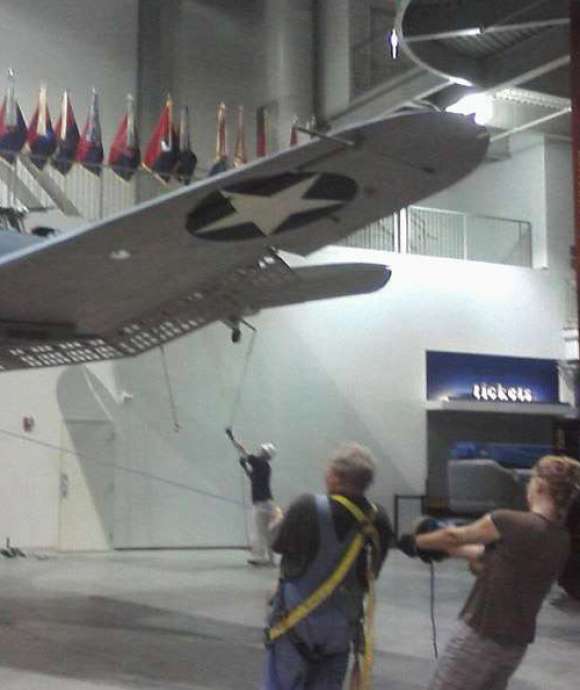
SHOP TALK: Collecting Aircraft at The National WWII Museum
Building a Collection of World War II aircraft 60 years after the war has been a challenging aspect of building the Museum collection.
Tom Czekanski
Cite this article:
MLA Citation:
APA Citation:
Chicago Style Citation:
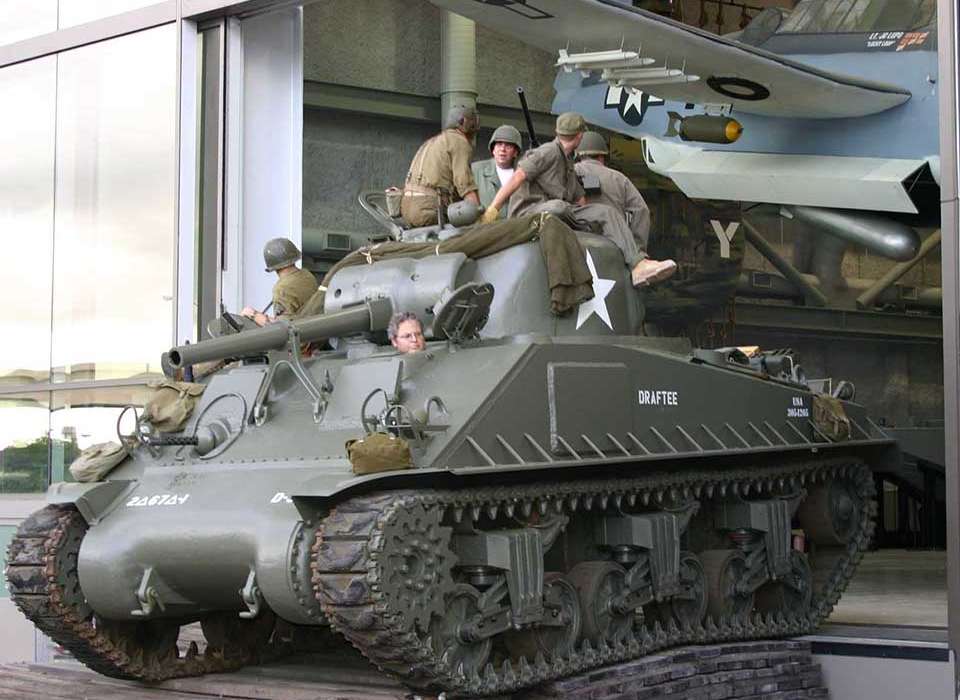
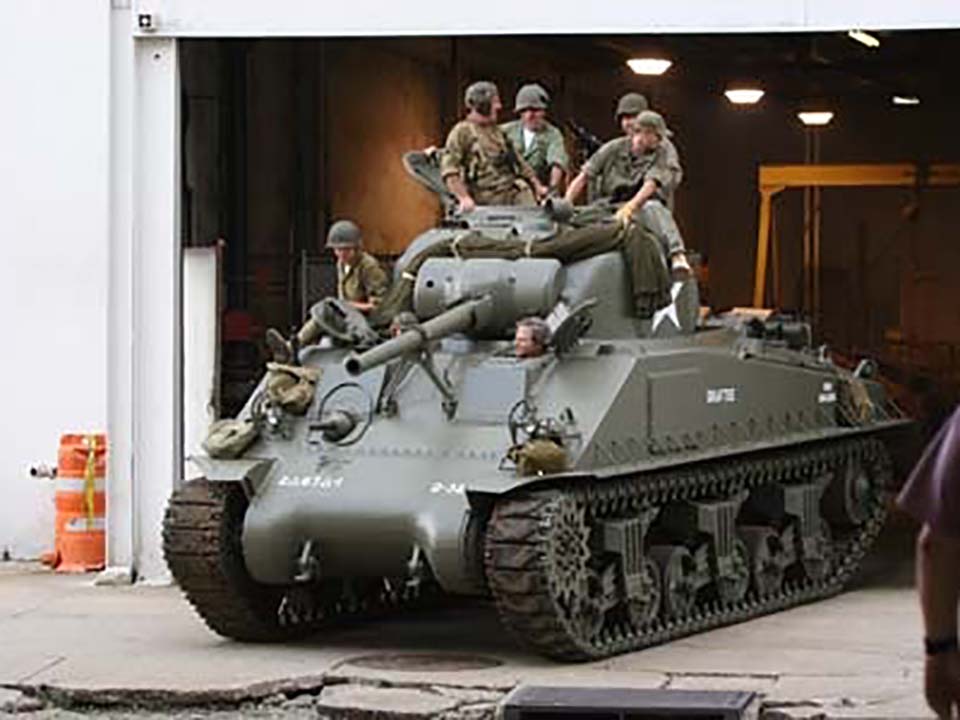
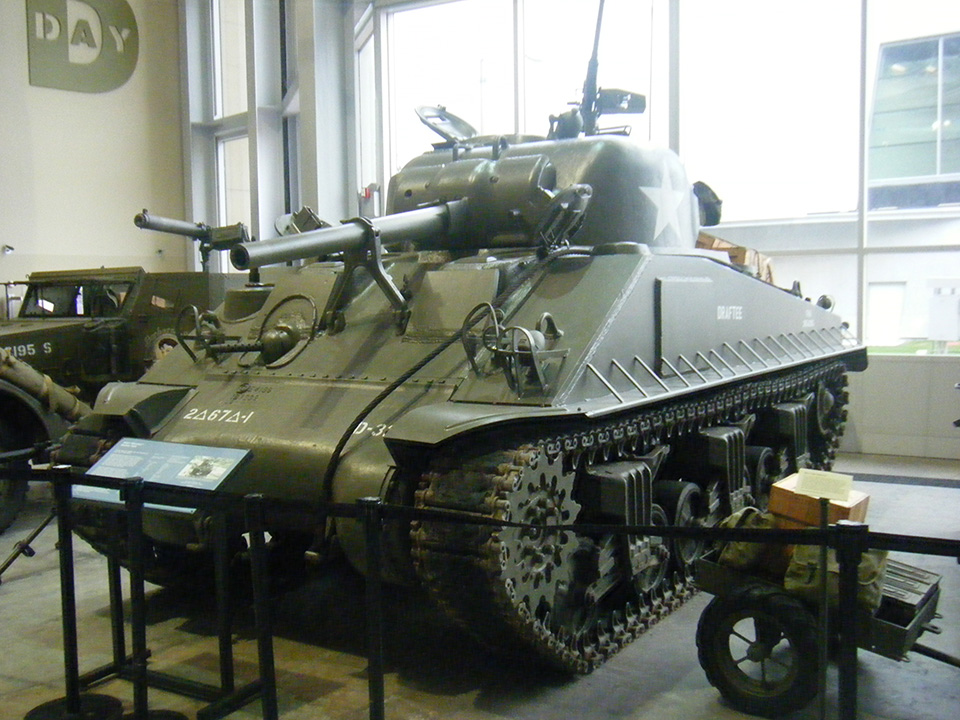
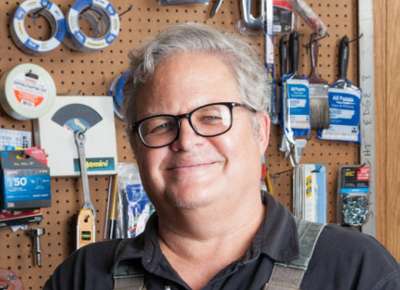
![Max Fuchs, New York City cantor, sings as Rabbi Sydney [sic] Lefkowitz, Richmond, VA, conducts the first Jewish services from Germany.](/sites/default/files/styles/max_650x650/public/2025-10/image1.jpg)






